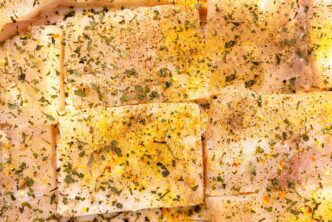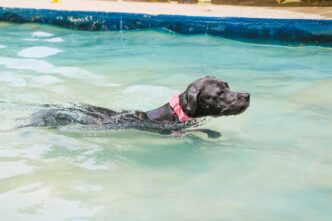A Quick Takeaway
The Story Behind the Trend
How to Make It Work for You
The Community View
When the temperatures drop and the winds pick up, a high-quality running vest becomes an indispensable piece of gear for anyone looking to maintain their fitness routine outdoors. These versatile garments are designed to provide crucial core warmth without sacrificing mobility or breathability, making them ideal for runners who want to stay comfortable and perform optimally through chilly autumn and harsh winter conditions. They effectively protect your vital organs from the cold while allowing your arms to move freely, preventing overheating during intense efforts and ensuring a strong, consistent stride on trails, roads, or tracks.
Why Choose a Running Vest Over a Jacket?
Many runners grapple with the decision between a full jacket and a vest when facing cold weather, but the running vest offers distinct advantages. Its primary benefit lies in its ability to insulate your core, where much of your body heat is generated and lost, while leaving your arms exposed. This design prevents the feeling of being overdressed and sweaty, which often accompanies a full jacket, especially as your body warms up during a run.
The freedom of movement provided by a vest is unparalleled. Without bulky sleeves, your arm swing remains natural and unrestricted, which is crucial for maintaining proper running form and efficiency. This design also promotes better ventilation, allowing excess heat and moisture to escape more easily, keeping you drier and more comfortable throughout your workout.
Key Features to Look For in a Winter Running Vest
Selecting the right running vest involves considering several factors that contribute to its effectiveness and your comfort. Understanding these features will help you choose a vest that best suits your specific running needs and local weather conditions.
Insulation Type
The insulation material dictates how warm the vest will keep you. Synthetic insulation, like polyester fills, is a popular choice for running vests because it retains warmth even when wet, dries quickly, and is typically less bulky than down. Down insulation offers superior warmth-to-weight ratio but loses its insulating properties significantly when damp, making it less ideal for wet or snowy conditions.
Weather Resistance
Winter running often means contending with wind, rain, or snow. Look for vests with windproof panels, especially on the front, to block cold gusts. Water-resistant or water-repellent finishes are also beneficial to shed light precipitation, keeping your core dry without compromising breathability.
Fit and Mobility
A good running vest should fit snugly but not be restrictive. It needs to move with your body, allowing for a full range of motion without chafing or riding up. Adjustable drawcords at the hem can help customize the fit and seal out drafts, while stretchy side panels enhance flexibility.
Pockets and Storage
For longer runs, the ability to carry essentials is vital. Look for secure pockets – zippered ones are best – to stash keys, a phone, nutrition gels, or small gloves. Some vests also incorporate larger back pockets or even hydration bladder compatibility for extended adventures.
Reflectivity and Visibility
Winter days are shorter, often requiring runs in low-light conditions. High-visibility colors and integrated reflective elements are crucial for safety, ensuring you are seen by motorists and cyclists. Prioritize vests that offer 360-degree reflectivity.
Breathability and Moisture-Wicking
Even in cold weather, runners generate significant heat and sweat. A vest with breathable fabrics, such as mesh panels or moisture-wicking linings, helps manage internal temperature and prevents clamminess by moving sweat away from your skin.
Layering Strategy with a Running Vest
A running vest is typically part of a strategic layering system, not a standalone garment. The effectiveness of your vest is greatly enhanced by what you wear underneath it.
Base Layer
Start with a moisture-wicking base layer made from synthetic materials or merino wool. This layer is critical for drawing sweat away from your skin, keeping you dry and preventing chills. Avoid cotton, which absorbs moisture and stays wet.
Mid-Layer (Optional)
For very cold conditions, an additional thin insulating mid-layer, such as a light fleece or thermal long-sleeve top, can be worn over your base layer and under the vest. This adds an extra layer of warmth without excessive bulk.
Choosing the Right Vest for Your Run
Consider the specific conditions and demands of your run when selecting a vest. For mild, windy days, a lightweight windproof vest might suffice. For truly frigid temperatures, an insulated vest with synthetic fill will offer superior warmth. If you’re heading out for a long trail run, a vest with ample storage and hydration capacity might be your best bet, often combining features of an insulated vest with a running pack.
Maintaining Your Running Vest
Proper care will extend the life and performance of your running vest. Always follow the manufacturer’s washing instructions, typically involving cold water and a gentle cycle, and air drying. Avoid using fabric softeners, which can degrade water-repellent finishes and impair breathability. Regular cleaning ensures the vest maintains its insulating and wicking properties.
Embrace Winter Running
A well-chosen running vest is an invaluable tool for any runner committed to training through the colder months. By providing targeted warmth, essential mobility, and smart features, these garments empower you to defy the chill, stay comfortable, and continue building strength and endurance year-round. Investing in the right vest means investing in consistent, enjoyable, and safe winter runs.








